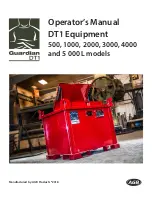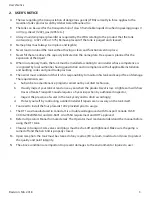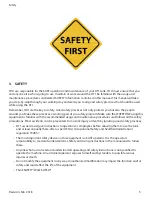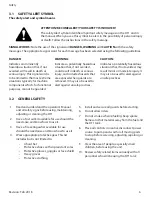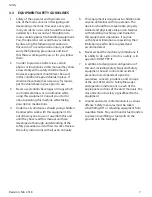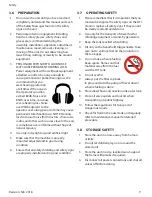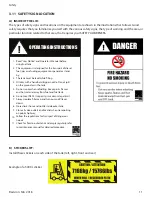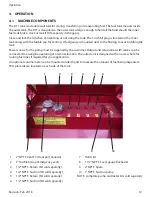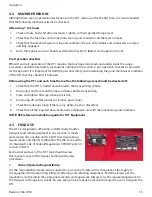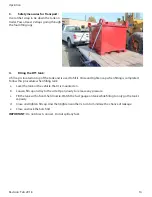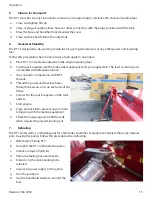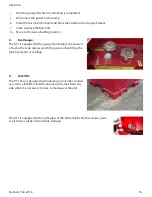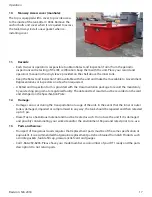
Operation
Revision: Feb 2018
13
4.2 MACHINE BREAK-IN
4.3 FIELD USE
Although there are no operational restrictions on the DT1 when used for the first time, it is recommended
that the following mechanical items be checked:
After using 1 to 5 hours
1. Check all nuts, bolts and other fasteners. Tighten to their specified torque level.
2. Check that the fuel lines and connections are in good condition and there are no leaks.
3. Check that the electrical system is in good condition. Be sure all terminals and connectors are clean
and fully engaged.
4. Go to the regular service schedule as defined in Section 5 (Retest and Inspection Form)
Pre-Operation checklist
Efficient and safe operation of the DT1 requires that each operator reads and understands the usage
procedures and all related safety precautions outlined in the section. A pre-operation checklist is provided
for the operator. It is important for both the personal safety and maintaining the good mechanical condition
of the DT1 that this checklist is followed.
Before using the DT1 and each time there-after, the following areas should be checked off:
1. Check that the DT1 is bolted or anchored to the transporting vehicle.
2. Disconnect and secure all the lines and hoses before transporting.
3. Close and tighten filler cap when tank is full.
4. Turn pump off and disconnect or remove power lines.
5. Check the tank gaps Clean if there is any debris, trash or diesel fuel.
6. Check that all the required documentation and placards are with the unit and in good condition.
NOTE: SEE reference Installation guide for DT1 Equipment
The DT1 is designed to efficiently and effectively transfer,
transport and refuel equipment in any location. It meets
and exceeds all Canadian and U.S. DOT fuel transporting
requirements and the UN certification. The IBC’s are built to
U.S Standard Code of Federal Regulations CFR DOT part 49
section 178.274.
Each owner and user of the DT1 tank should review
this manual as part of the regular training and review
procedures.
1.
Owner/Operator Responsibility :
It is the responsibility of each owner, operator or user to be familiar with all regulations that apply to
the equipment for transporting, filling, transferring and refueling equipment. Perform all tests per the
regulations and maintain the appropriate records and paperwork. Always carry the required paperwork for
the Transport of Dangerous Goods. Be sure everyone is properly trained and licensed to use or transport the
DT1.

